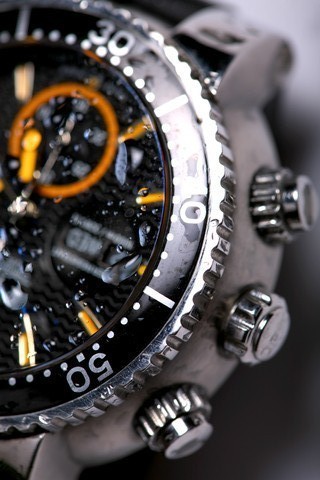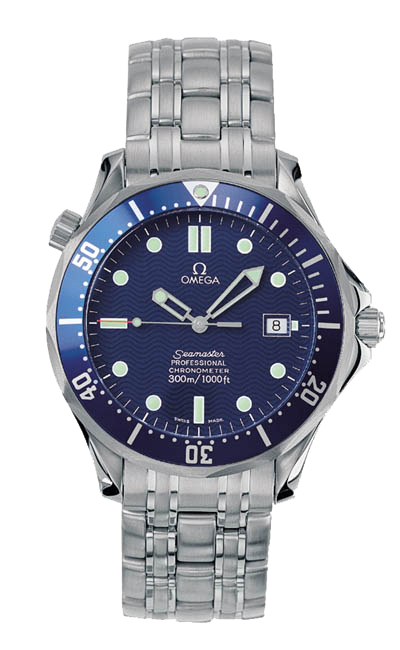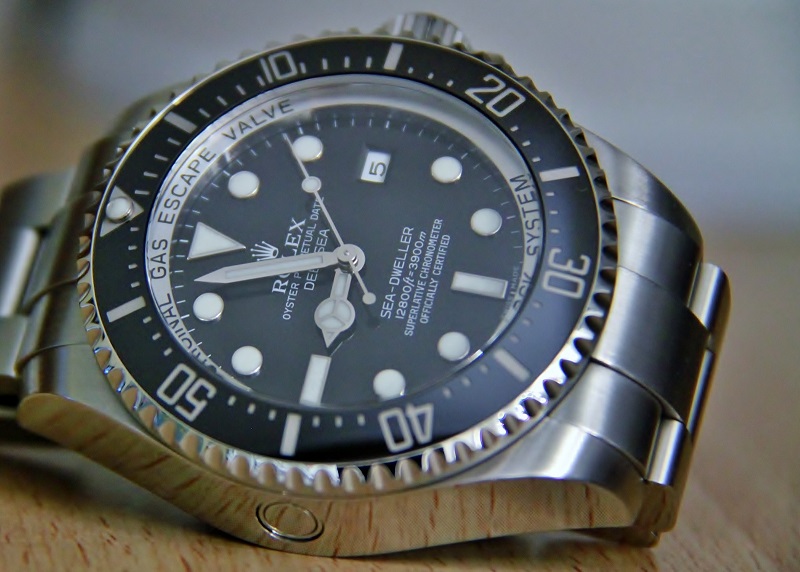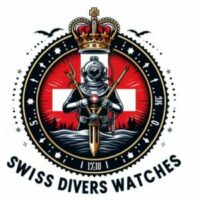Article written by Alexander – Founder and Owner of swissdiverswatches.com
Table of contents
This is a rather long and analytical article, so by all means stay put and read the whole article – if you find it interesting and useful. If you only want to read specific segments of the article, you can find them below:
- Why Swiss watches?
- And why specifically Swiss Divers Watches?
- What kind of people wear Swiss Divers Watches?
- Swiss Divers Watches in popular culture and among celebrities.
Why opt for Swiss Made Divers Watches?
I’m a great fan of Swiss Made divers watches. This is obviously no secret to you. This whole website is dedicated to divers  watches made in Switzerland. But why not opt for a non-Swiss watch manufacturer, or a dress watch or a pilot watch?
watches made in Switzerland. But why not opt for a non-Swiss watch manufacturer, or a dress watch or a pilot watch?
There are many legendary and celebrated Swiss luxury timepieces that are classified as dress and pilot watches. So why do I insist with such persistence that Swiss Made Divers Watches are indeed special? A watch is merely a watch – yes? On the most superficial level, I would be inclined to say “yes”, but there is a dramatic difference between a watch and a watch.
All watches aren’t the same.
But you might refute my rather self-confident and bold statement by saying: “I’m not a professional diver. I’m not even an amateur diver. I’m not even near the water. So why would I need a divers watch on dry land?”
And my response would be: “You don’t need to be a diver – neither a professional one nor an amateur one, in order to wear a Swiss Made divers watch on dry land 7 days a week, 365 days a year.”
Most people aren’t professional divers and most people wouldn’t use their divers watch for diving – at least not on a daily basis – and yet I absolutely and without the slightest hesitation insist that Swiss Made Divers Watches are the most desirable watches in the world.
I can honestly tell you that in a comparison game, I’d prefer a Swiss watch over a non-Swiss watch, and I would absolutely prefer a divers watch over a dress watch or a pilot watch. So what are my reasons?
Why Swiss watches?
First of all – it’s Swiss – you can’t beat Swiss quality.
Switzerland is pretty much the epicenter of the world’s luxury watchmaking, and Swiss watches, and luxury watches are almost synonymous. In fact, the Swiss tradition and expertise of watch manufacturing is almost unmatched with regard to innovation, quality materials, artisanship, luxury and comfort.
I’d say that the main competitor of the Swiss watchmaking industry is Japan – without question. Undeniably, you’ll find a large amount of countries making decent and maybe even pretty good watches.
There are in fact French, Italian, German, Danish, Swedish, Russian, American, Chinese and Canadian brands too, but “the big two” in the watchmaking industry are without a doubt Switzerland and Japan.
Quality and technological innovation:
If you want a list of the “big three” in terms of quality timepieces and technological innovation, I’d guess that would be (1) Switzerland, (2) Japan, and (3) Germany.
Manufacturing volume:
In terms of manufacturing volume – only the Chinese and the Japanese can match and even exceed the Swiss in this field.
Luxury and craftsmanship:
In terms of luxury and quality, I’d guess it’s only the Germans that can match the Swiss.
The Germans do in fact manufacture the globally respected (among connoisseurs) luxury watch brands such as A. Lange & Söhne and Glasshütte. They are in many ways comparable to Switzerland’s extreme luxury watch brands, such as Patek Philippe, Vacheron Constantin, Audemars Piguet, Jaeger LeCoultre, Breguet, Blancpain and Zenith.
The main difference between German and Swiss luxury watch brands, is that Germany has only a handful of respected luxury watch brands and manufacturers, while Switzerland has dozens of internationally respected luxury watch brands and manufacturers – maybe even as many as 40-50 of them!
Most non-Swiss and non-Japanese watch brands use Swiss or Japanese movements anyway, so there’s no doubt that in the field of watchmaking, and in the field of conceiving, developing and manufacturing the watch movements, Switzerland and Japan together enjoy a completely dominant position in the market.
As far as the movements are concerned, the Swiss supply non-Swiss brands with ETA movements – usually lower end ETA movements such as a standard ETA 2824, while the Japanese supply Japanese and non-Japanese brands with Seiko, Citizen and Miyota movements. The servicing costs, and reliability of the Japanese movements would probably be equal to entry level Swiss movements. The Swiss ETA 2824 is an example of an entry level Swiss movement.
The ETA movements are manufactured by Switzerland’s and the world’s single largest corporate group, manufacturer and owner of entry level-, mid range-, and high end luxury watch brands – the famous Swatch Group.
The Swiss watch brands themselves do not only rely on standard ETA movements, but very often on higher end ETA movements, and even luxury in-house made high quality movements, such as the ones used by Rolex, Patek Philippe, Audemars Piguet, Omega, Breitling, Jaeger LeCoultre and IWC – just to mention a few prominent examples.
As you will see later on in this article, the Swiss and the Japanese have two fundamentally different approaches to watchmaking.
The Art Of Swiss Watchmaking:
Quality controls and quality inspections among the most prestigious Swiss brands, can easily become an obsession! Every detail, and every aspect of the time measuring machine needs to be exactly right.
The Swiss tend to use the best and the finest quality materials for pretty much every aspect of the watch. Swiss quality controls are the most rigorous and meticulous in the world! The Swiss are more adept at quality, invention, handicraft and artisanship, then just simple repetitive mass production.
Yes, the majority of Swiss luxury watch brands, and manufacturers (including Rolex, Omega and Breitling), with very few exceptions, require modern high technological manufacturing methods, and mass produce their watches with modern industrial methods – but they need a combination of high tech equipment, machines and master watchmakers in order to assemble the movements and to examine the watch’s build quality, aesthetics, shape and design, water resistance, anti-magnetic properties and accuracy.
The road to a finished Swiss luxury watch is a long, arduous and demanding one – it’s not merely a question of repetitive industrial manufacturing processes.
(1). How long it takes: The manufacturing process of a Swiss quality and luxury watch can literally take months! Only a few days, or maybe 1-2 weeks at the most, are required to manufacture a standard Japanese, a non-Swiss, and a lower end Swiss watch.
(2). Quality materials: Only the finest and best quality materials are being used – usually high-grade steel (either 316L stainless steel or 904L stainless steel), titanium, precious metals (18 carat gold, platinum), and anti-magnetic materials. Anti-magnetic materials are needed inside the movements in order to make sure that magnetic fields cannot manipulate or distort the accuracy of the movement. Materials such as silicon, niobium and zirconium are used for the purpose of protecting the movement against shocks and magnetic fields. The quality materials mentioned above are used for the case, the bracelet, and the beating heart of the watch – the movement.
(3). Scientific and accurate manufacturing methods: The materials of the case, the bracelet, the dial and the movement, are cut and shaped with extreme precision, using science based, extreme high accuracy cutting machines. The precision is equivalent to maybe as much as a 100th of one millimeter.
(4). The manufacturing process, is being done with the greatest attention to detail, form, shape, design, and aesthetics of the movement and the case of the watch. The same level of attention is given to the accuracy, the function and the reliability of the movement as well.
(5). Quality tests: Extremely stringent and demanding quality controls are needed in order to turn the watch into a perfect machine and a perfect piece of handicraft, and it takes the skills of a highly trained master watchmaker to build, assemble and test a mechanical and automatic movement, before the actual timepiece is released to retailers and customers.
The quality tests would include:
- Accuracy.
- Anti-magnetic properties.
- Water resistance.
- Shock resistance.
- Computer simulated, machine simulated and even manually tested wear and tear tests.
- Perseverance/endurance tests, that might take several weeks!
As you can see, Swiss watchmaking isn’t just a question of mass production, even though they rely on modern equipment and manufacturing processes.
The Japanese Approach To Watchmaking:
The Japanese approach is very different. A standard Japanese watch requires a few days or maybe 1-2 weeks of production. Japanese watchmaking is about industrial efficiency in manufacturing watches. Japanese movements are rarely finished and rarely are fine materials or quality materials used for Japanese movements, cases or bracelets.
The Japanese tend to fit their watches with ordinary mineral glass (instead of sapphire, used by the Swiss), and their movements are simply mass produced for industrial and economic efficiency. The Japanese don’t apply the same rigorous quality controls as the Swiss.
Furthermore, a Swiss watch has to be manufactured in Switzerland in order to be considered authentically Swiss, and since Switzerland is one of the most affluent and wealthy nations in the world, it means employees in Switzerland demand higher salaries – which will naturally and additionally increase the cost of manufacturing watches and watch movements.
In Japan, it’s not unusual that Japanese watch manufacturers outsource the production of their watches and movements to low salary countries in Asia to push down prices.
Swiss movements are carefully examined by engineers, artisans, and master watchmakers, in order to achieve maximum quality. Usually, only quality materials are being used for the components of the Swiss movement. Japanese movements, albeit not bad, just meet industrial requirements before reaching retailers and customers.
The conclusion is: there are fundamental and considerable differences between Swiss and Japanese watchmaking!
The only Japanese watch which comes to my mind, which might match the Swiss watchmaking tradition, in terms of movement accuracy, attention to detail (regarding dial aesthetics, case and bracelet quality), well finished aesthetically pleasing movements, and fine high quality materials, would probably be the Grand Seiko.
This however is the exception rather than the rule of Japanese watches and movements. The Grand Seiko isn’t very representative of the Japanese watchmaking industry. In truth, it’s simply out of place comparing one single Japanese model, or collection, to dozens of Swiss brands and manufacturers, that routinely make quality and luxury timepieces.
You probably won’t find a single country out there other than Switzerland that can produce better made watches using finer materials, and better made time measuring instruments and horological pieces of art. Even the materials, and metals, are carefully selected for manufacturing high quality components of Swiss movements.
Considering what you get when you purchase a Swiss watch, you get a favorable cost-to-benefit ratio, because Swiss watches imply quality and durability. Your Swiss watch is built to last.
You can purchase a basket of cheap watches and in ten years from now most of them will be broken and out of order. Maybe you can sell all of them for a few bucks but that’s probably it.
A higher end Swiss luxury watch such as Rolex, Patek Philippe, Omega, Breitling or Jaeger LeCoultre, would still be working after ten years or longer, and would still retain most of its value. This is certainly true to Rolex which is known all over the world to retain its original value or most of its original value- better than most brands – even other Swiss luxury watch manufacturers.
Hardly any country can match the Swiss in luxury watch making. I’d be very surprised if you would find another country that can produce better made watches and with greater attention to details, craft, artisanship and quality than the Swiss! Switzerland is nr 1 in the watchmaking industry. Take my word for it.
And why specifically Swiss Divers Watches?
Swiss Divers Watches are the ultimate luxury watches – they are in fact the ultimate time measuring machines available on the market today.
It’s a common misunderstanding that extreme and exorbitant price tags that usually come with handmade dress watches, would indicate a higher quality or reliability, more accurate movements or a better build quality. This is far from the truth. In fact, the price tag rarely represents the true inner quality of a watch. A higher price tag is based on supply and demand, labor and production costs and the usage of precious materials.
I can humbly assure you that I really don’t mean to be presumptuous, but dress and pilot watches really don’t impress me no matter how expensive they happen to be.
You’re probably asking “why?”. To begin with, dress and pilot watches are unpractical and they cannot be used for every or any occasion. They aren’t built to last. They aren’t built for the test of life. Very poor build quality – they are fragile and delicate. You need to baby these watches to avoid ruining them altogether. In a way, wearing a luxury dress watch spoils the fun since you need to invest a considerable amount of time to just avoid ruining your watch.
A high price tag doesn’t necessarily imply a high shock resistance, high time accuracy, or anti-magnetic properties, an impressive build quality or a substantial water resistance capability.
Wearing a luxury dress watch means you need to be worried of what environment you’re in – you need to avoid rain, water, sports activities and you need to avoid any sudden or “violent” hand and arm movements that might accidentally scratch the watch against a wall.
Would you contemplate wearing a $100,000 dress or pilot watch in the sea, in a swimming pool, at the local gym, in the outback, in the mountains, in the jungle, in the desert, in arctic regions, in the tropics, or in a swelter or in a situation where you’ll be exercising or putting physical strain on your body?
Would you be comfortable switching and changing 2-3 watches either on a daily or weekly basis simply because they aren’t built for the test of life?
We both know the answer to this question. Neither you nor I would ruin an expensive Swiss dress watch or pilot watch, because we know that they aren’t built for the test of life.
A Swiss Divers Watch is the biggest bang for your buck – it’s built like a tank, it can withstand shocks and magnetism (yes magnetism can affect the accuracy of the movement), it’s built for an active lifestyle, and it’s built for almost any environment and any occasion – it’s very versatile! You can use a Swiss Divers Watch for almost any occasion.
Swiss Divers Watches are built to last. In a sense you could say that a Swiss Divers Watch is built or intended for a carefree daily life – the watch is robust and can handle the test of life.
Below is an Omega Seamaster Professional – quite possibly the epitome of a Swiss Divers Watch – robust, sturdy, elegant, practical and comfortable. Swiss Divers Watches are usually versatile all-round watches. Some of them are very distinct tool watches but most of them can be used for any occasion. The Omega SMP below can be used in the ocean, in the outback, for social occasions, parties and life’s special occasions – such as ceremonies, weddings, festivities, dates, banquets or black tie events:

Here is my list of positive attributes and properties that in my mind make Swiss Divers Watches the ideal watches:
- Swiss excellence and quality.
- Sapphire crystal glass is standard – it’s hard and extremely scratch resistant. Measures 9/10 on Mohs scale of mineral hardness.
- Easily readable dials.
- Luminescent dials.
- Solid band.
- Anti-magnetic properties.
- Shock resistance.
- Very accurate and reliable movements.
- Solid and well built watches that are made to last.
- Beautiful and aesthetically appealing.
- Multi-task usability and versatility – Swiss Divers Watches can be used for almost any occasion.
- You would be potentially saving your money by opting for a Swiss Divers Watch. You don’t need to change your watch when you go from your office to the beach, from the beach to the ocean, from the ocean back to the beach and from the beach to an evening festivity, party, exclusive dinner, date or a black tie event. Why have 2-3 watches on a daily or weekly basis when one single divers watch can easily replace them? You simply can’t go wrong with a Swiss Divers Watch.
Two possible downsides to Swiss Divers Watches – and I don’t intend to be ironic – would be related to space travel and changes in the air pressure. The two negatives would specifically apply to Swiss Divers Watches equipped with sapphire crystal glass and automatic movements:
- Automatic movements don’t work in outer space because there’s no atmosphere and automatic movements are dependent on your hand and arm movements. Mechanical movements on the other hand do work. The lion’s share of high end Swiss Divers Watches use automatic movements.
- Most Swiss Luxury Watches – Swiss Divers Watches are obviously included in this category – use sapphire crystal glass, which is hard and extremely scratch resistant, but brittle when exposed to changing air pressure in space travel.
Unless you are going into outer space, I wouldn’t be worried about wearing a Swiss Divers Watch – be it a Rolex, Tudor, Omega, Breitling, IWC, Jaeger LeCoultre, Audemars Piguet, Blancpain, Panerai, Tissot, TAG Heuer or Longines just to mention a few!
The beautifully made Swiss Divers Watch below is a Rolex Sea Dweller Deep Sea. This is one of my favorite watches of all time and I plan to add a Rolex Sea Dweller to my collection. This watch is a prominent example, the epitome of the marriage between Swiss luxury handicraft, and a solidly built time measuring machine built to last years and even decades if serviced properly.

What kind of people wear Swiss Divers Watches?
People from every walk of life wear them. Celebrities, actors, politicians, businessmen, businesswomen, athletes, scientists, intellectuals, investors, soldiers, officers, medical doctors, lawyers, amateur divers, professional divers, the man on the street – the list is indeed endless!
Most people that wear divers watches usually wear them for aesthetic reasons – the sheer beauty of the watch design, and the highly reliable movements of Swiss Divers Watches – not necessarily because they’re professional divers.
People usually buy divers watches because they are versatile, comfortable, practical, sturdy, and elegant.
The water resistance of a divers watch is actually irrelevant for daily use since most users aren’t divers anyway, and even if they were, how likely is it that they would be diving to a depth of 100 m, 200 m, 300 m, 500 m, 600 m or 4000 m? The minimum requirement for a divers watch, is water resistance at a depth of 100 m, but most divers wouldn’t even go that deep.
Swiss Divers Watches in popular culture and among celebrities
While I agree that picking a watch merely because celebrities wear a particular brand or model is slightly shallow, the prominence of particular Swiss watch brands, collections, and individual timepieces among celebrities, indeed give you a strong indication that Swiss Made divers watches aren’t just used by the extremely few professional divers.
Like I stated previously in this article: most people who wear divers watches aren’t professional divers at all.
Swiss Divers Watches is James Bond’s choice. The author who invented and conceived James Bond – Ian Fleming, wrote in his books that the fictional secret agent was wearing a Rolex.
In the early Bond movies of the 1960s and the 1970s, the suave, elegant and sophisticated British secret agent was wearing a Rolex Submariner. James Bond was occasionally wearing a Rolex Submariner in the 1980s as well. From the 1990s until our days, James Bond has been wearing an Omega Seamaster Professional, and more recently Omega Seamaster Aqua Terra and Omega Seamaster Planet Ocean.
Three Bond actors have occasionally worn Rolex Submariners: Sean Connery, Roger Moore and Timothy Dalton. Two Bond actors have worn Omega Seamaster Professional: Pierce Brosnan and Daniel Craig. And one Bond actor has been wearing Omega Seamaster Professional, Omega Seamaster Aqua Terra, Omega Seamaster Planet Ocean, and Omega Seamaster 300 Master Co-Axial: Daniel Craig.
Besides the James Bond Movies, Rolex Submariner has been spotted in movies involving actors such as Robert Redford, Steve McQueen and Larry Hagman.
Professional golf player Tiger Woods and the world renowned soccer player David Beckham are known to have worn Rolex Sea Dweller Deep Sea.
Prince William of the United Kingdom is known to have worn an Omega Seamaster Professional for several years.
US Vice President Joe Biden has been spotted several times wearing an Omega Seamaster Professional.
Panerai manufactures divers watches as well. Sylvester Stallone, Dolph Lundgren, Terry Crews and Jason Statham were wearing a Panerai Luminor Submersible in Expendables 2.
Leonardo DiCaprio is known to endorse TAG Heuer Aquaracer – another world renowned Swiss Divers Watch.
Al Pacino and former President Bill Clinton have occasionally worn a Jaeger LeCoultre Master Compressor Diving Watch.
In short: Swiss Divers Watches are so deeply entrenched in our society and popular culture that we take them for granted.
Most people who wear Swiss Divers Watches are obviously no divers – they aren’t even near the water. But that is beside the point. The point is that these kind of watches are among the most well built, sturdy, practical, elegant, aesthetically appealing and aesthetically pleasing timepieces ever made in the history of watchmaking.
The global appeal, and ubiquitousness of divers watches, and their salient position in the Swiss watchmaking industry, is indeed and without question a testimony to the immense popularity of divers watches made in Switzerland.
If you have any comments or questions please drop them below and I’ll be happy to answer them!
Article written by Alexander – Founder and Owner of swissdiverswatches.com

Buy Exclusive Watches Online

That is excellent reading! What brand watch is featured on the background wallpaper and first picture, top of this page? The chronograph, with the yellow/orange markings.
Hello Peter and welcome to swissdiverswatches.com.
The background picture and the picture on the top of the page both display an Oris Diving Watch, which is a heavy duty tool watch.
Cheers
Alexander
What a nice looking piece! I see it was a limited edition. I’ll have to keep my eye out for one, although my wife might divorce me if I get another watch.
Have a nice one
Peter
Hi Peter. Glad you like the images. Oris is available right here on this site.
Cheers
Alexander